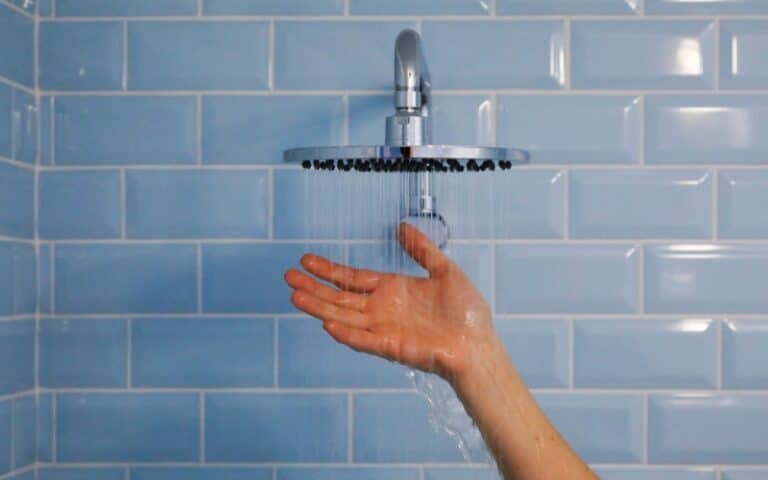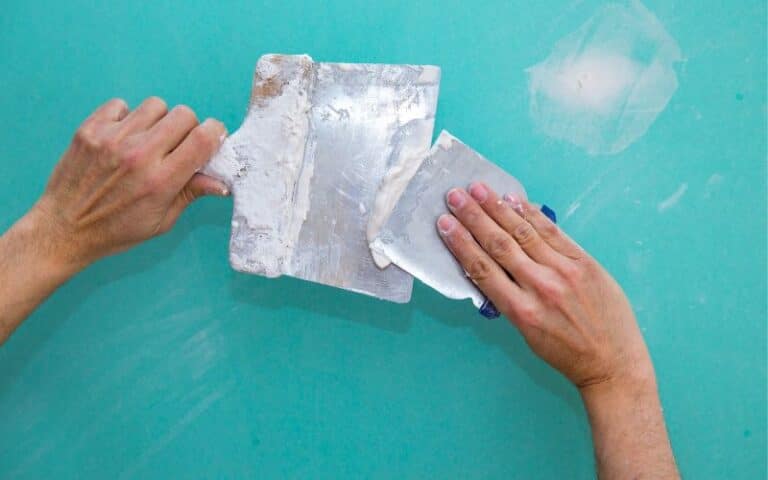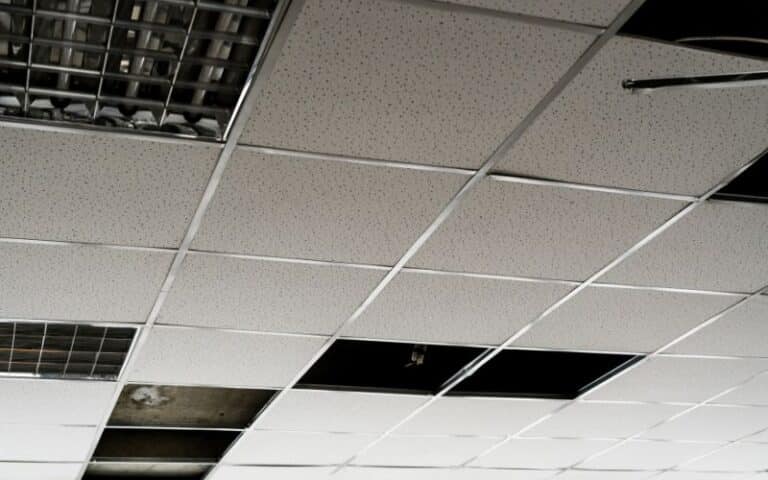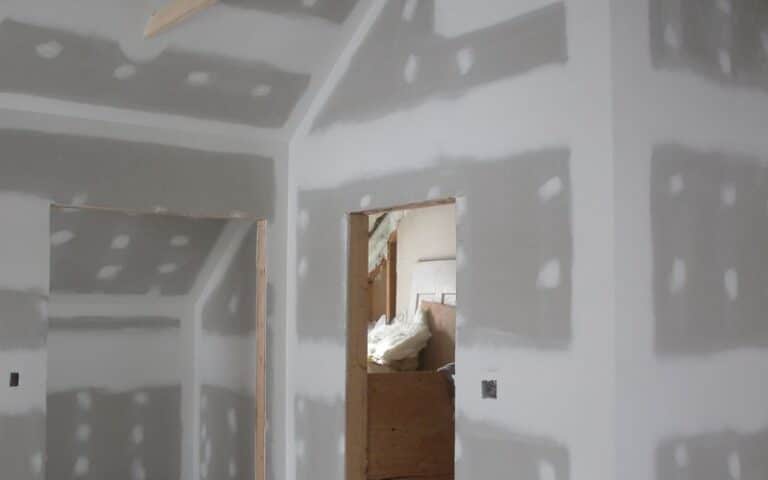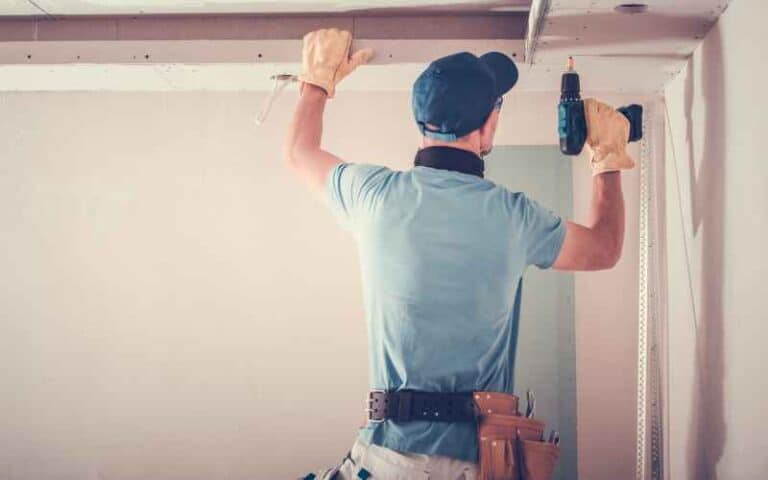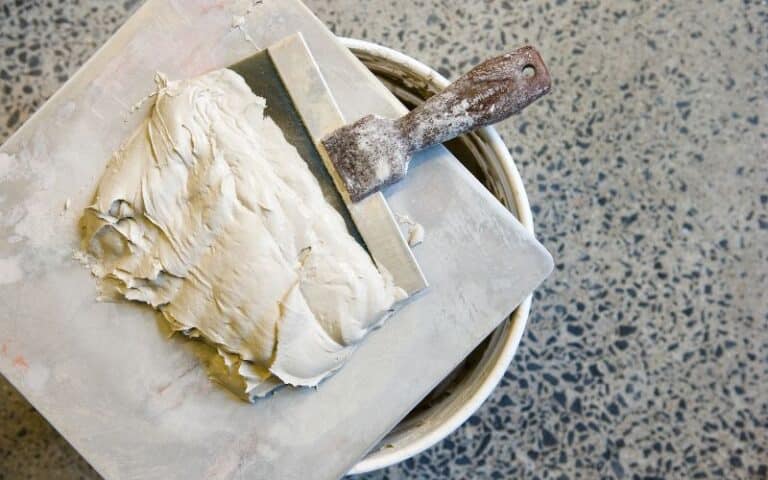Drywall installations can get messy, just like most building installations. However, it’s less messy compared to other finishing materials.
When applying drywall on plywood, you’re required to screw in the drywall for it to fit the plywood securely.
Consequently, the screwing process leaves a residue of drywall dust on your floor, and you’d need to clean it.
If you’re wondering how to clean the drywall dust off your plywood, you’re in the right place.
The best way to clean drywall dust off plywood is by sprinkling it with water before sweeping or vacuuming it. This is the best method because it stops the dust from getting into your nose and eyes or flying around while cleaning it up. After vacuuming, you can mop the floor with water and a cleaning agent.
In this article, I’ll explain how to clean drywall dust off your plywood and what you can use to dissolve drywall dust.
By the end, you’ll also learn if you can vacuum drywall dust and if it’s advisable to mop drywall dust off your plywood.
Ready for a Drywall Quiz?
How Do I Clean Drywall Dust off My Plywood?

For best results, it’s advisable to clean drywall dust off your plywood using two tools easily found in the home; water and a vacuum cleaner.
The water is meant to protect you from dust inhalation while cleaning drywall dust, while the vacuum is intended to clean the dust.
However, some people tend to sweep or vacuum drywall dust without using water; this is discouraged because it exposes your eyes and nose to dust.
It’s also unhelpful because it may create more work for you by spreading the dust farther around the building and causing difficulty sweeping the dust.
The water and vacuum cleaning method is best to avoid an unfruitful result while cleaning drywall dust off the plywood.
Below are the steps for cleaning drywall dust off your plywood with water and a vacuum cleaner or broom for best results:
#1. Empty The Room You’re Cleaning
The first thing you should do before cleaning drywall dust off your plywood is to clear the room of furniture and other items in sight.
Alternatively, you can wrap the furniture in plastic and securely tape it underneath instead of carrying them out and back in, especially if they’re heavy.
It’s essential to empty the room of your furniture and other items to avoid getting dust on them while you clean.
This is because you’ll have to dust your furniture to remove the particles, which could be tedious.
#2. Wear Protective Clothing to Avoid Eye or Nose Irritation
The next thing you should do is to dress appropriately before cleaning drywall dust in a building or home.
This is because drywall dust can get into your eyes or nose during cleaning and cause irritation.
It’s best to wear protective goggles and a dust mask before you begin cleaning, as it protects your eyes and lungs from irritation.
These protective measures are also best for people that find themselves cleaning up a large area that’s filled with drywall dust.
#3. Sprinkle Water over the Area Covered with Drywall Dust
After you’ve worn dust-preventive articles of clothing, the next step is to find a way to sprinkle water over the dusty area you’ll be cleaning.
You can sprinkle water by placing some in a bowl and using your hand to spread it around the room or using a spray bottle.
It’s important to sprinkle water on the dusty area first because water weighs down the dust and stops it from spreading while sweeping.
However, you must ensure you sprinkle water lightly to avoid making the room messy or muddy afterward.
#4. Use a Damp Cloth to Wipe the Walls
When you must’ve successfully sprinkled the floor with water, you should focus on cleaning the walls next.
It’s best to dampen a cloth and use it to wipe the walls of the drywall dust to avoid spreading dust everywhere.
Interestingly, when you use a damp cloth, the dust absorbs the water, and it’s easier to remove it without making a mess.
However, if you’re unsatisfied with the results after using a damp cloth for the wall, you can use a dry cloth to clean it again.
#5. Vacuum or Sweep the Drywall Dust off the Floors
After cleaning your walls with a damp cloth, the next step is sweeping or vacuuming the floor you’ve previously sprinkled with water.
Depending on your preference, thoroughly sweep or vacuum every corner of the room you’re ridding of drywall dust.
If you decide to use a vacuum cleaner, ensure that you use a wet and dry vacuum cleaner instead of a regular one for the best results.
#6. Mop the Room with Water or a Mild Cleaning Agent
Lastly, after you’ve swept or vacuumed the area containing drywall dust, you’ll need to mop it to ensure it’s spotless.
This is because after vacuuming or sweeping, you might notice dust stuck to the floor because of previously used water.
You can mop the floors using a damp mop and a mild cleaning agent to remove those stains.
Can I Simply Mop Drywall Dust off Plywood?
It’s not advisable to mop drywall dust off plywood without doing anything prior, as this would still have the area looking messy.
You might want to save time by only mopping the drywall dust instead of sweeping or vacuuming first, but you’ll end up with unsatisfactory results.
It’s best to use the step-by-step process for cleaning drywall dust off your plywood with water and a vacuum cleaner that has been provided above instead.
To further convince you on which method is best, more reasons will be provided that differentiate both ways significantly.
Below is a table that shows the differences between using just a mop and using the water and vacuum method;
| Mopping Only Method | Water and Vacuum Method |
|---|---|
| It easily makes the floor messy as you mop. | It makes it easier to clean after water is sprinkled. |
| It takes longer because you’d keep leaving dust particles behind. | It’s straightforward because each step reduces your workload. |
| It leaves stray dirt that a vacuum could’ve cleaned. | It completely gets rid of all the dirt and dust in the area. |
| It has to be repeated a couple of times which is tedious. | It only needs to be done once for the best results. |
What Can I Use to Dissolve Drywall Dust?
The best option for dissolving drywall dust is water; because it absorbs the water and becomes heavier.
It’s easy to dissolve drywall dust before cleaning it; you only need a spray bottle and cool water.
However, ensure that you lightly sprinkle the water over the area to avoid making it messy and harder to clean.
If you sprinkle too much water, it’ll be tough to vacuum or sweep the drywall dust off the floor afterward.
This is because the floor would’ve gotten sticky or muddy, requiring much more effort and deep cleaning to be made clean.
Can You Vacuum Drywall Dust?
You can vacuum drywall dust. It is arguably one of the most effective ways to eliminate it.
After sprinkling water over the drywall dust, you’ll find that a vacuum would be a great tool to clean drywall dust.
However, the type of vacuum cleaner used for the process strongly determines whether the results would be satisfactory.
Using a regular household vacuum cleaner to remove drywall dust might be a struggle because of its inferior filter.
Most people who have tried using a household vacuum cleaner to clean drywall dust end up clogging it.
Luckily, a better option prevents you from clogging your regular household vacuum cleaner while removing drywall dust.
You can either settle for a wet and dry vacuum cleaner with a heavy-duty filter or use a broom to sweep the drywall dust.
A wet/dry vacuum cleaner, also known as a shop vac, has a filter best suited for the fine particles that drywall dust is made of.
FAQs
Is Breathing Drywall Dust Harmful?
Breathing drywall dust for a long period is likely to cause irritation that could result in coughing, catarrh, or other breathing problems.
How Long Does Drywall Dust Stay in the Air?
After a drywall installation, dust takes about five to ten minutes to leave the air and gather on the floor instead.
What Should I Drink after Inhaling Dust?
If you mistakenly inhale drywall dust while cleaning it up and begin to cough, you can drink warm water with a pinch of black salt.

